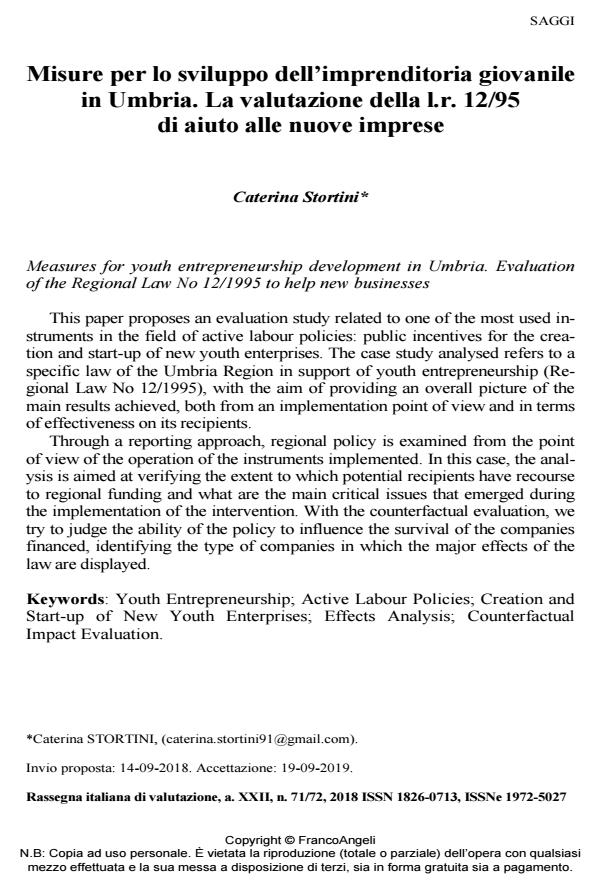Measures for youth entrepreneurship development in Umbria. Evaluation of the Regional Law No 12/1995 to help new businesses
Journal title RIV Rassegna Italiana di Valutazione
Author/s Caterina Stortini
Publishing Year 2019 Issue 2018/71-72
Language Italian Pages 20 P. 82-101 File size 483 KB
DOI 10.3280/RIV2018-071005
DOI is like a bar code for intellectual property: to have more infomation
click here
Below, you can see the article first page
If you want to buy this article in PDF format, you can do it, following the instructions to buy download credits

FrancoAngeli is member of Publishers International Linking Association, Inc (PILA), a not-for-profit association which run the CrossRef service enabling links to and from online scholarly content.
This paper proposes an evaluation study related to one of the most used instruments in the field of active labour policies: public incentives for the creation and start-up of new youth enterprises. The case study analysed refers to a specific law of the Umbria Region in support of youth entrepreneurship (Regional Law No 12/1995), with the aim of providing an overall picture of the main results achieved, both from an implementation point of view and in terms of effectiveness on its recipients. Through a reporting approach, regional policy is examined from the point of view of the operation of the instruments implemented. In this case, the analysis is aimed at verifying the extent to which potential recipients have recourse to regional funding and what are the main critical issues that emerged during the implementation of the intervention. With the counterfactual evaluation, we try to judge the ability of the policy to influence the survival of the companies financed, identifying the type of companies in which the major effects of the law are displayed.
Keywords: Youth Entrepreneurship; Active Labour Policies; Creation and Start-up of New Youth Enterprises; Effects Analysis; Counterfactual Impact Evaluation.
Caterina Stortini, Misure per lo sviluppo dell’imprenditoria giovanile in Umbria. La valutazione della l.r. 12/95 di aiuto alle nuove imprese in "RIV Rassegna Italiana di Valutazione" 71-72/2018, pp 82-101, DOI: 10.3280/RIV2018-071005